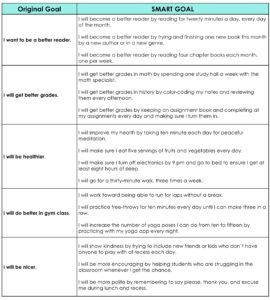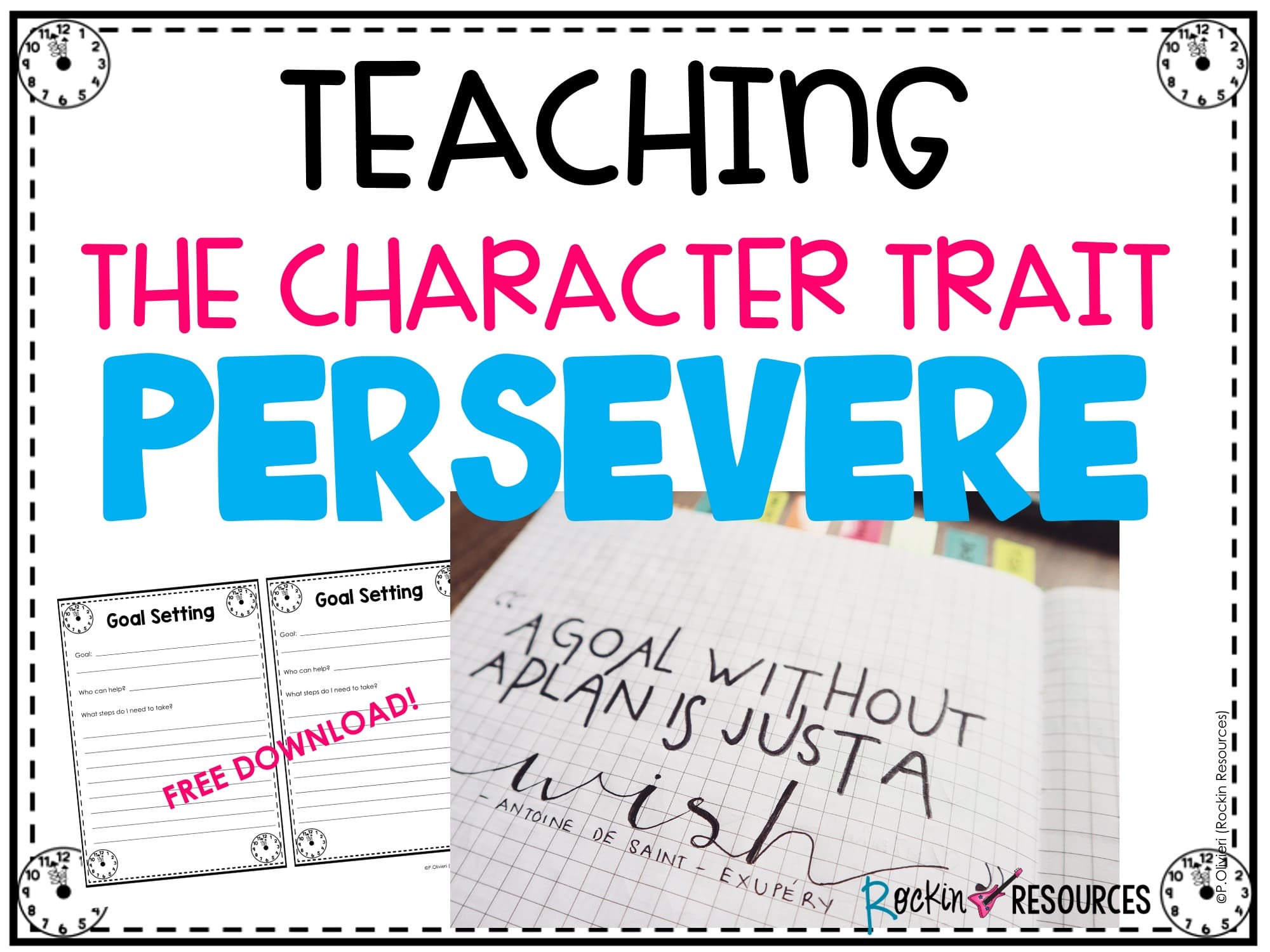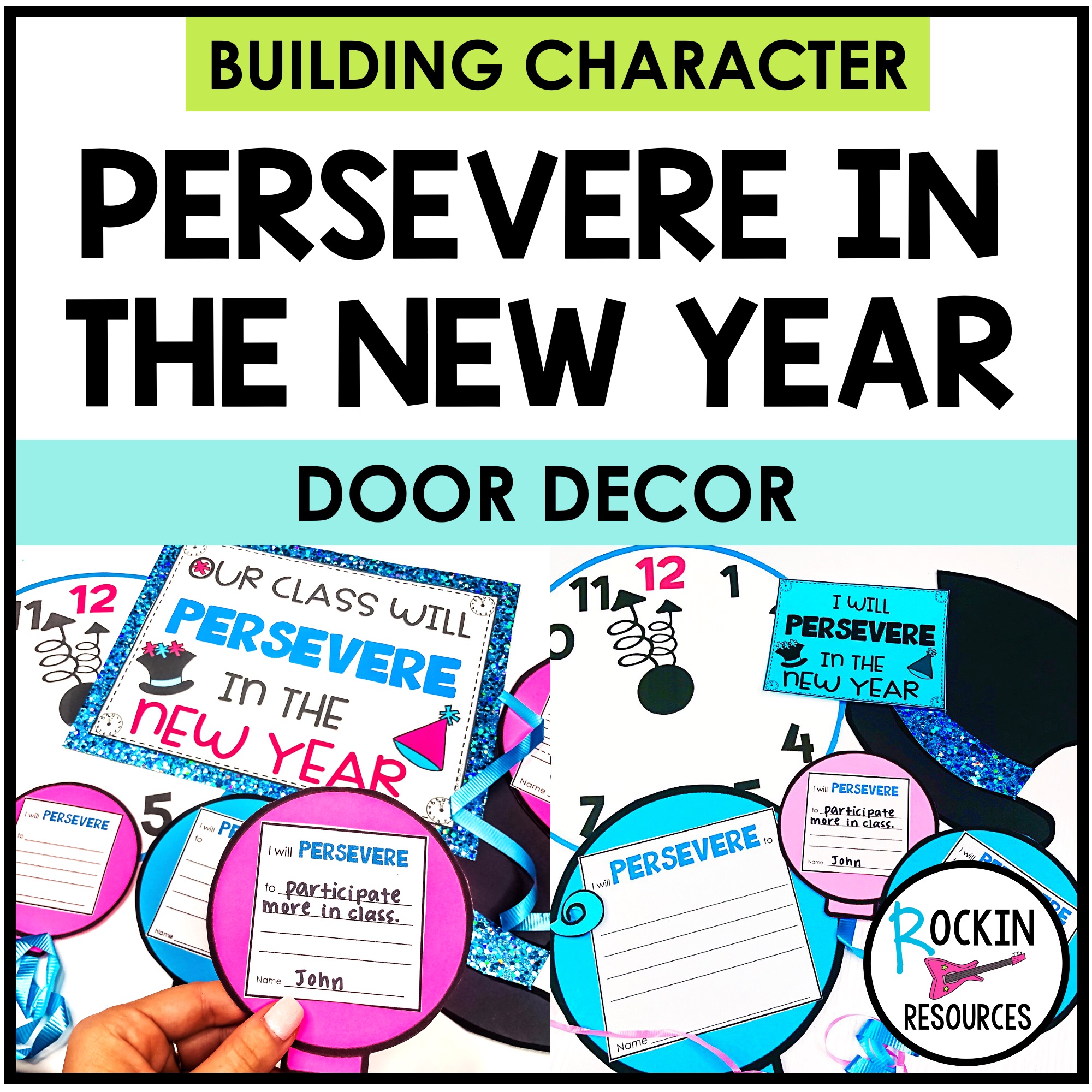Do you know what fraction of people keep their New Year’s resolutions? According to various studies, it’s less than 8% of people! Perhaps the goals are too rigid, or perhaps the goals simply aren’t “smart.” No, we’re not talking about a truly foolish goal like eating your body-weight in salad every day, but a goal that isn’t Specific, Measurable, Achievable, Realistic, and Timely—SMART. Help your students (and yourself) create a resolution they can stick to and achieve using SMART goals!
A new year is a new start in many ways, hence the idea of a transformative goal or resolution. You don’t have to tie SMART goals to the new year for them to work. That is one reason they’re so valuable—they are year-round and lifelong!
What are SMART goals? These are goals that have a set formula for achieving your outcome. Here’s one way to break it down, including examples that you can share with your students!
S- Specific– Think of a specific goal. Instead of wanting good grades in all subjects, choose one!
M- Measurable– Are you wanting to eat more vegetables? Keep a log of what you eat and see how many servings of veggies you are getting!
A- Achievable– Do you want to help keep the environment clean? Include things in your plan that you can do without much help from an adult.
R- Realistic– Do you want to win every soccer game? Try thinking of something more realistic. For example, I want to score ___ goals this season.
T- Timely– Have a timeframe for when you want to complete or revisit your goal. Often, a target date will help you persevere.
Now that you know what SMART goals are, how can you make them work for students?
Whenever you want to make something successful, it’s wise to look at the pitfalls and mistakes that you can avoid before embarking on your task. First, look at some examples of failed goals from the past. You can have students volunteer some that didn’t work out, share some of your own, or simply pull some generic ones from the public. “I want to make a million dollars this year.” “I want to lose twenty pounds.” “I want to be faster.” “I want a perfect 4.0 and A’s on every test.” Point out what could be wrong with each of these goals. Was it too unrealistic? Did the person fail to give themselves a deadline or a way to achieve the goal? Maybe it simply wasn’t measurable. Leading students to examine how a positive-sounding goal might actually fail will help them to avoid these pitfalls. Then, it’s time to introduce ways to make goals “SMARTer.”
Let your students think of a personal goal. Display the SMART guidelines and allow them to try to tailor their goals to be as specific, measurable, achievable, realistic, and timely as possible without your assistance. Click here for materials to use for this activity. Next, meet with students privately to look over their goals. Find ways they can boost the SMART components, which will ultimately lead to the most rewarding and best part…
Helping Students Achieve SMART Goals
We have to admire the fact that some students will write a goal that is almost certain to be unattainable for this school year. They have boundless enthusiasm and optimism! Hurray for the millionaires and future NBA Pros in your class—but they probably can’t make that goal happen in the next twelve months. That’s where you’ll need to help them turn a big, unachievable or unrealistic goal into something that fits all the categories of the SMART goals platform. Let’s use this example (and you may want to share it with your class, too).
This year, I’m going to save enough money to buy a car!
While that may not be too wild, it may be premature or unachievable for your students.
Walk students through ways to make this goal more attainable using the SMART method.
Specific: Ask questions to narrow this goal down. What kind of car? Will the entire car be paid for or just a down payment? What is the price range of the car?
Measurable: How will they monitor their savings?
Achievable: How will they achieve the goal of earning the money they need to save? Is saving that much money achievable in one year?
Realistic: Is it realistic to expect a student who doesn’t work full-time to save enough money to fully buy a car? What would be a realistic amount of money a student could save, given the student’s job prospects and what they’ve managed to save before?
Timely: Is a year too broad of a timeframe? Is that enough time? Can you choose a specific date or check in points?
After brainstorming with students using this example, help them turn the original goal into something they can actually feel confident they will achieve.
Start: This year, I’m going to save enough money to buy a car!
SMART: I will earn one hundred dollars each month from my babysitting money and allowance, so I will have $1200 dollars saved for a down payment on a used car by December 31st.
After working through samples with students, help them create a SMART academic goal that you can monitor with them. It might be a goal they reach in a week, or it might be a goal that takes the whole year. Whatever it is, encourage students to work toward each milestone and then build to a bigger one. In this way, your little millionaires and all-stars will reach their dreams.
If your students are drawing a blank, here are some common goals that have been rewritten to utilize SMART goal-setting.
Many people decide they simply won’t set goals for themselves because they haven’t been successful in the past. Using SMART goals can help students see that they can achieve their dreams, using small, specific, measurable steps. SMART goals aren’t simply smart, they’re sensible and a great introduction to your classroom!
KEEP ROCKIN’ IT!












